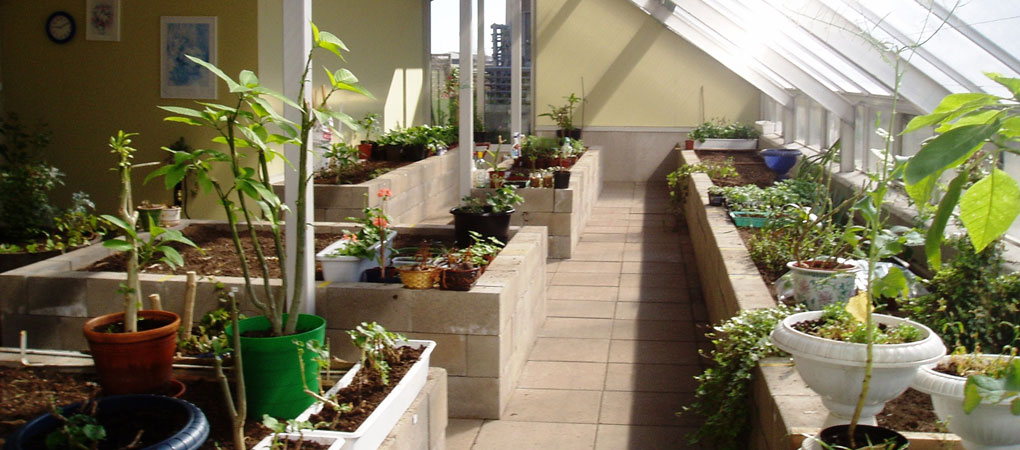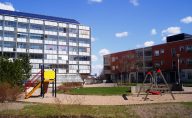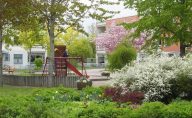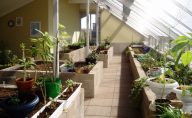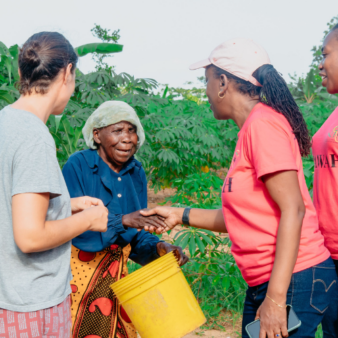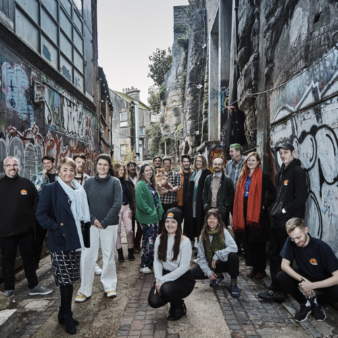A range of innovative environmentally and socially sustainable approaches were used in the renovation of this former problem housing estate in Goteborg, which is now one of the most popular in the city. Community involvement throughout the design process and in the on-going management and maintenance of the estate helps to ensure a successful integration of Swedish and immigrant families, as does the provision of community facilities, in particular the communal greenhouses.
Project Description
Aims and Objectives
- To improve the quality of life of the tenants.
- To provide high quality public housing at affordable costs.
- To involve the residents in the renovation process.
- To increase opportunities for social interaction.
- To carry out renovation using sustainable construction and energy saving methods.
- To integrate innovative renewable energy technology.
- To improve the architectural quality of public housing.
Located 10 km north of Göteborg, the Gårdsten estate of 2,700 apartments was built in 1970 as part of the Swedish government’s drive to produce large numbers of social housing apartments. From its earliest days, the estate was characterised by continuous problems of high unemployment, alienation, insecurity, poor maintenance and was used as a sink estate for housing non-Swedish residents. All space outside the apartment was described as ‘no man’s land’ and the design was brutal, grey and raw, creating a feeling of hopelessness. Technical problems with the construction led to poor quality accommodation and health problems for the residents. In 1996, the city authorities started a process of social and physical regeneration of the estate and this project was the first renovation project carried out in that process.
The Solar Housing Renovation in Gårdsten project consists of the restoration of 255 apartments in ten buildings arranged in courtyard formation. Each courtyard has been defined as a ‘social and technical unit’ for the 80 – 90 households living in the buildings surrounding it and the courtyard spaces have been developed to facilitate greater interaction and cooperation between the residents. The involvement of all local residents was an important element of the project and they were involved from the earliest stages, with an empty apartment set aside for liaison with the architects and housing company about their future homes and living environment. The residents were organised into groups to deal with special tasks such as safety issues, community rooms and facilities. The architects cooperated with the residents during the design phase, especially with respect to community areas and facilities.
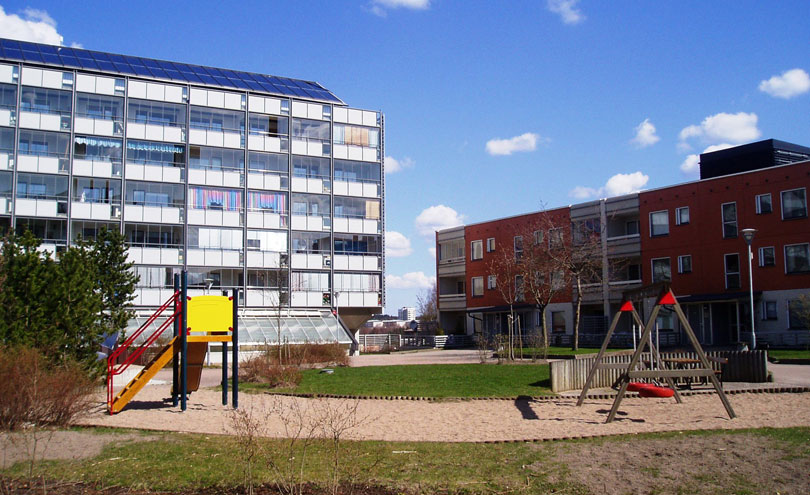
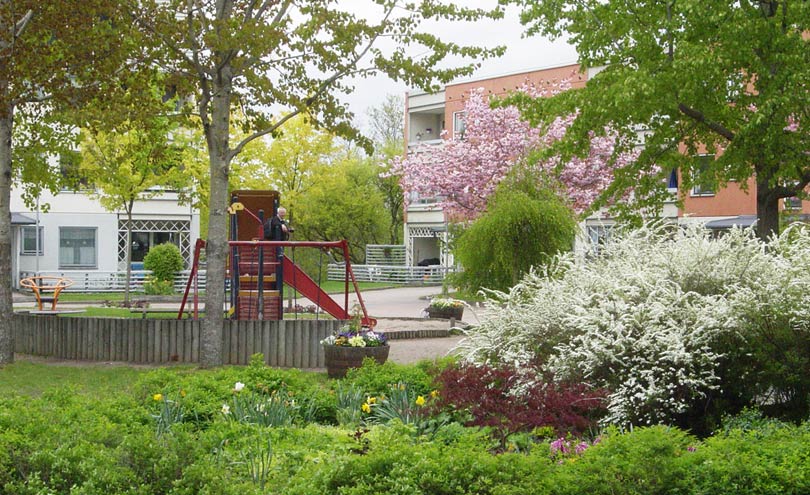
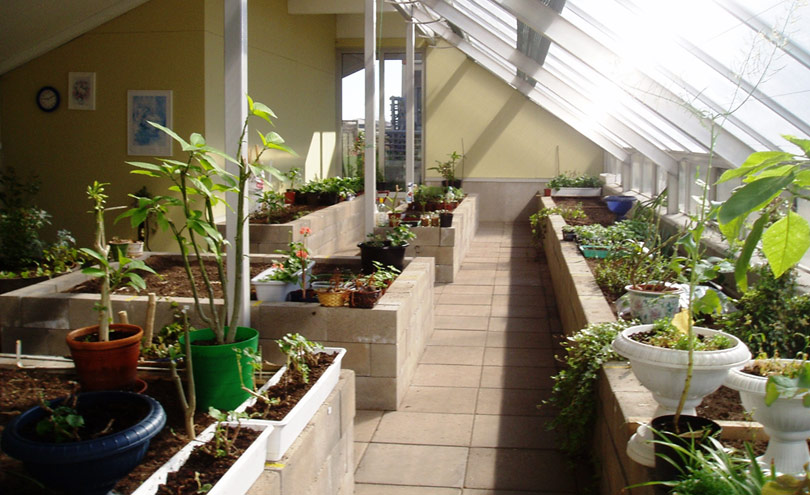
Community greenhouses have been provided on the ground floors of the blocks, which provide an opportunity for social interaction as well as production of a wide range of fruit, herbs and vegetables. Composting and recycling facilities have been provided for each courtyard. The internal layout of the individual apartments was not altered, although they were upgraded with new windows, finishes and appliances after discussions with individual residents. Landscaping and external painting have transformed a previous grey and gloomy environment into an aesthetically pleasing and sought-after place to live.
The community rooms are used for table tennis, ‘cosy rooms’, children’s play rooms and communal events. There is good attendance from all groups at community events and meetings. Residents are encouraged to take joint responsibility for the management and maintenance of their estate and are especially involved in maintaining the communal areas and the outdoor environment.
An innovative solar air double envelope system is used for solar air heating and prefabricated solar collector roof modules provide pre-heating of domestic hot water. Heat is stored in the thermal mass of the original concrete façade elements. The joints between the elements, which before renovation resulted in large heat losses, now allow the warm air into the apartments. When the cooler air reaches the bottom of the wall cavity, it is returned to the solar collector to be reheated.
The total cost of the project was €11.7m (US$15.5m) i.e. €624 per m2 (US$828 per m2). Costs relating to the energy/sustainable building elements were €2.2m (US$2.9m). The cost was primarily met by the housing company (€11m or US$14.6m) with €400,000 (US$530,480) coming from the EU and €300,000 (US$397,860) from the national government.
The housing company that owns the apartments carries out the management with the active involvement of the tenants. It is anticipated that the rental income will cover all future costs of maintaining and managing the apartments. The 40 per cent cost savings for energy and water to the company is used to help meet the capital costs of carrying out the improvements.
The housing company has increased rental income as all apartments are currently occupied and its operational costs for energy and water have been reduced by 40 per cent. The flats are now warmer and do not suffer from condensation with a corresponding improvement in the health of the residents. Reduced energy costs, better facilities and greater opportunities for social interaction have all led to an overall improvement in quality of life.
Prior to the renovation, the estate had been very difficult to let, with 35 per cent of all apartments empty. However a clear indicator of the success of the project was the fact that soon after the project was completed in 2000, every vacant flat was rented out to new tenants by June 2001 and there is now a waiting list of residents wanting to live there.
Why is it innovative?
- Social improvement through the creation of community space and semi-private space.
- Provision of community greenhouses and adjacent laundries.
- Use of prefabricated solar energy roof modules for quick and reliable construction.
- Use of a solar air double envelope system of space heating and solar preheating of ventilation air through glazed balconies.
- Integrated approach of the various elements of the project.
- The methods used are not complicated and do not require specialist experience or expensive techniques.
- Individual metering of energy and water consumption allows residents to be responsible for their resource consumption.
The methods used for individual metering of energy have now been introduced in a number of public housing companies in Sweden and there is an increasing demand for the technology. To date the housing company has installed similar systems in 1,000 other apartments.
What is the environmental impact?
Energy consumption has reduced by 40 per cent as a result of the project. Energy and water use are monitored and charged to individual apartments so creating greater awareness of consumption. All waste is now sorted on site and organic waste is fed into special composting units in the community greenhouses. Public awareness of the need to save energy and water has been raised as a result of the demonstration aspects of the project.
Since this is a renovation project the existing materials were largely retained with additions of glazing on balcony spaces, creation of new pitched roofs using pre-fabricated solar energy roof modules and external insulation. All new building materials were selected for their health and environmental qualities with guidance from EU experts. Existing windows were used wherever possible with the glazing upgraded to low emissivity glass. Solar collectors pre-heat domestic hot water in the apartments, 35 per cent of which is solar heated.
Is it financially sustainable?
The project has turned a former ‘difficult to let’ estate into a popular housing area reducing voids from 35 per cent to zero. It is therefore much more economically viable than it was before the renovation was carried out and all maintenance and management costs can be met from the rental income.
Prior to the improvement work the costs for water, heating and electricity were met by the housing company and a standard charge was made in the rents. After improvements these costs are now 40 per cent lower and costs of usage in individual apartments are identified on the monthly charge and met by residents as part of their monthly payment. The increase in the rent from the improvements is offset by a reduction in the energy charge, with the result that, on average, the monthly payment has not increased. Residents are able to see the amount of energy and water they are using and know that reducing or increasing it will affect their rental payment accordingly.
What is the social impact?
The courtyard design has been specifically carried out to create greater opportunities for community interaction and integration. Skills are acquired by residents in a range of areas due to their involvement in the design and management processes of the project.
Approximately half of the residents currently living in the apartments are Swedish and the rest are from a range of countries. There are now extremely good relations between all residents with good interaction between the different nationalities.
Lessons Learned
- It is important to inform all involved parties about the ideas and concepts behind the project.
- Tenant involvement is very valuable but needs careful preparation.
- Cooperation between all parties involved is necessary from the very start of the project in order to achieve an integrated design.
- A long and comprehensive design phase will result in a short and effective construction phase with few mistakes and a good overall cost.
- Every project has its own specific possibilities and limitations and it is important to find the best concept for the project.
- Renewable energy can be successfully used in renovation projects if it is successfully integrated.
Evaluation
The project is being monitored by CET Energy management as part of the EU Thermie Programme support.
Transfer
There is potential for transferability of the project throughout Europe and elsewhere where very large numbers of similar concrete panel blocks of flats already exist and where demolition is not an appropriate solution. The methods used in the Solar Housing Renovation project in Gårdsten are not complicated and do not require complicated or expensive techniques.
The housing company has used some of the features of the renovation project in other social housing that it owns in the same area. Other housing companies in Sweden are using the individual metering method for energy and water used in this project.
The Gårdsten area, including the renovation project was one of the three main exhibition items featured in the national Swedish housing exhibition held in Göteborg in 2005 and there have been a range of visitors to the project from both national and international including city government of Hong Kong.
The project is included as one of the EU renewable energy demonstration projects under the SHINE programme. It is included on a CD of demonstration projects, 25,000 copies of which have been distributed. The project has been presented in many journals, including the Swedish architect’s journal as well as being presented at several conferences in Sweden and Europe.
Partnership
Professional, Local Government, Local Community

